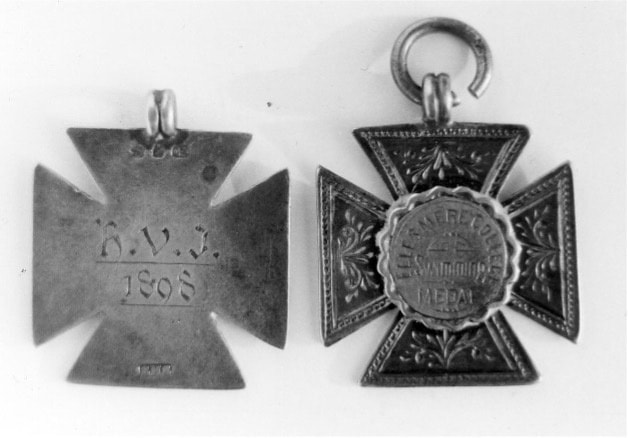Menin Gate Memorial
Roll of Honour
T - V
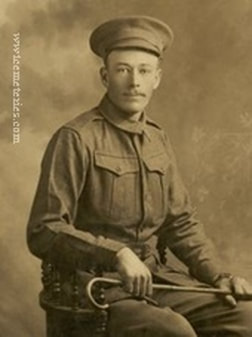
2926 Private
Eric Austin Tate
20th Bn., Australian Infantry, A.I.F.
9th October 1917, aged 26.
Panel 7 - 17 - 23 - 25 - 27 - 29 - 31.
Son of George and Emma Tate. Native of Kangaroo Valley, New South Wales.
Eric Austin Tate
20th Bn., Australian Infantry, A.I.F.
9th October 1917, aged 26.
Panel 7 - 17 - 23 - 25 - 27 - 29 - 31.
Son of George and Emma Tate. Native of Kangaroo Valley, New South Wales.
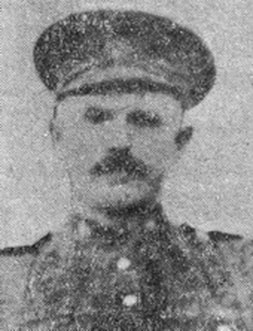
20824 Private
John Taylor
10th Bn. Canadian Infantry(Alberta Regiment)
3rd May 1915, aged 30.
Panel 24 - 26 - 28 - 30.
Son of Charles and Elizabeth Taylor, of Woodbine Cottage, Finstown, Orkney, Scotland.
Two Orcadian Taylor brothers died after fighting in two of the epic actions of the Great War. John Charles Taylor was born at Rusland, Harray on 28th May 1884, the first son, after two older daughters, of Charles Taylor and Elizabeth Taylor (née Brown). Another son and daughter followed,before Alfred Taylor was born at Millgoe, Firth on 21st May 1894.
Charles Taylor was a farm servant, working at Binscarth, Finstown when the 1901 census was taken. John was then working as a ploughman at Moan, Harray. John emigrated to Canada, probably before his mother died at Millgoe of appendicitis on 1st May 1910. John Taylor was working as a locomotive engineer when the Great War started. He enlisted into the 21st Alberta Hussars on 22nd August 1914, at Medicine Hat. John travelled east to join the First Contingent at Valcartier Camp, Quebec and then attested into the 10th Battalion, C.E.F. on 24th September. Five days later John embarked on the SS Scandinavian in Quebec City docks, sailed with the fleet carrying and escorting the First Contingent on 3rd October.
10th Battalion, C.E.F. landed at Plymouth on 14th October and moved to Salisbury Plain to spend four months training there. 10th Battalion was then packed into an old cattle boat, the Kingstonian, and sailed to St. Nazaire in France. The boat ran aground there in a gale, but 10th Battalion finally disembarked on 15th February 1915.10th Battalion manned front line trenches during the Battle of Neuve Chapelle a month later, but did not attack. It then moved north into Flanders, when the Canadian Division moved into the line north of Ypres.
When the Germans launched the first gas attack north of Ypres at 5 pm on 22nd April, 10th Battalion was in divisional reserve in Ypres. The release of chlorine gas had forced back the French troops on the left of the Canadians’ front, leaving a gap about 4½ miles wide. 10th Battalion moved up that evening to 3rd Brigade H.Q. at Mousetrap Farm, where it was ordered to attack that night with 16th Battalion into the gap.
Just before midnight the two Canadian battalions advanced towards an oak plantation, known afterwards as Kitchener’s Wood. The Germans heard their advance, so lit it with flares and poured rifle and machine gun fire onto the Canadians. They pushed on into the wood and, in fierce hand-to-hand fighting in the dark, killed or drove out the Germans holding it. Heavy German artillery fire reduced the strength of the force in the wood to less than 500 men, who withdrew at 5 am on the 23rd to a line along its southern edge, prolonged by 3rd Battalion to St. Julien. During the day British, French and Canadian reserves deployed to fill the gap on the Canadians’ left, while all took heavy casualties from unremitting German fire.
At 4 am on the 24th the Germans launched a gas attack against the Canadian front, most of which held despite having only improvised protection. However, the Germans penetrated the front of 15th Battalion and the Canadians and reserve British troops fought a desperate and costly battle to seal the breach. 10th Battalion took many more casualties during three days of fighting to hold the position known as Location “C” on Gravenstafel Ridge.
10th Battalion pulled back from the front on 27th April, but moved two days later into reserve trenches guarding Nos. 3 and 4 Bridges over the Yser Canal. Intermittent German shelling caused more casualties, including John Taylor, who was killed in action on 3rd May, aged 30. 10th Battalion lost 485 casualties in the Second Battle of Ypres. John was one of many whose body was not identified; they are commemorated on Panel 24 of the Menin Gate in Ieper.
Alfred Taylor also left Orkney before the Great War, enrolling into the Royal Navy as an Ordinary Seaman at Chatham on 10th February 1914. Alfred had almost completed his basic training there, when war broke out. He joined the 25,000 ton new battleship, HMS Benbow, on 7th October and then sailed with it to join the Grand Fleet three days later in its main base, Scapa Flow in Orkney.
Alfred Taylor was promoted Able Seaman on 10th February 1916. HMS Benbow remained with the Grand Fleet throughout the Great War; it took part in the Battle of Jutland and was not damaged. Alfred was luckier than most of the battleship’s crew, because visiting his family in Finstown did not require long boat and train leave journeys, also he probably had extra opportunities to see them.
After Jutland the German High Seas Fleet did make several sorties to try and attack the Grand Fleet. However, most of the Grand Fleet sailors spent many boring months lying at anchor in Scapa Flow. Alfred was a volunteer in early February 1918 to a call for officers and other ranks to take part in “a secret and dangerous mission”. The Grand Fleet easily found 200 volunteer sailors to join 740 Royal Marines of the 4th Battalion for that mission. On 1st March Alfred arrived back at Chatham, where the force for a raid to block Zeebrugge and Ostend Harbours was concentrating.
The sailors boarded on an old battleship, HMS Hindustan, while they spent a month training in close quarter fighting. That included using the bayonet, Mills bombs, Lewis light machine guns and Stokes mortars, also exercises, some at night, against locally based Territorial soldiers. Alfred was one of the 100 sailors assigned to the 5600 ton old cruiser, HMS Vindictive, the others boarded two Mersey ferries, Daffodil and Iris, and Royal Marines joined all three ships. They were to come alongside the mole at Zeebrugge and land storming parties, to distract the German defences while blockships sailed into the harbour and blocked the canal to Bruges.
After a cancellation on 12th April while the ships were approaching the Belgian coast, they pressed on towards Zeebrugge harbour on the night of the 22nd. Vindictive was 300 yards out when the wind blew away her smoke screen. Alert German gunners poured fire onto the ship and cut down almost half of the landing parties, sheltered behind improvised deck protection.
A battered Vindictive came alongside the Zeebrugge mole at 0001 hrs on the 23rd, St. George’s Day. Daffodil pushed to hold her there for fifty minutes, while sailors and marines struggled ashore under heavy fire. Only about 200 made it onto the mole and none even reached the German gun batteries. However, the three blockships did sail into the harbour, covered by a smokescreen most of the way. Thetis was sunk before she could ram the lock gate, but Intrepid and Iphignia pressed on to ground in the Bruges channel and exploded charges to scuttle there.
Iris, Daffodil and Vindictive had by then sailed from the mole, having retrieved most of the surviving landing force, except a platoon that failed to recognise the withdrawal signal. The Ostend raid failed altogether, while the Zeebrugge raid only blocked the channel for a few days. However, they provided a major boost to British civilian morale, at a time when the B.E.F. was fighting desperately to stop the Germans reaching the Channel ports, and for its own survival.
British casualties at Zeebrugge were 161 killed, 411 wounded, 16 missing and 13 taken prisoner, from a total force of about 1,300. Alfred Taylor died of wounds, aged 23, on 24th April, one of 28 who did soon after the raid. He is buried, with many other raid casualties, in Gillingham (Woodlands) Cemetery. He is commemorated, with his brother John, on the Firth Memorial. One of their sisters unveiled the memorial, during its dedication on Sunday, 26th December 1921.
Picture and Article courtesy of Brian Budge
John Taylor
10th Bn. Canadian Infantry(Alberta Regiment)
3rd May 1915, aged 30.
Panel 24 - 26 - 28 - 30.
Son of Charles and Elizabeth Taylor, of Woodbine Cottage, Finstown, Orkney, Scotland.
Two Orcadian Taylor brothers died after fighting in two of the epic actions of the Great War. John Charles Taylor was born at Rusland, Harray on 28th May 1884, the first son, after two older daughters, of Charles Taylor and Elizabeth Taylor (née Brown). Another son and daughter followed,before Alfred Taylor was born at Millgoe, Firth on 21st May 1894.
Charles Taylor was a farm servant, working at Binscarth, Finstown when the 1901 census was taken. John was then working as a ploughman at Moan, Harray. John emigrated to Canada, probably before his mother died at Millgoe of appendicitis on 1st May 1910. John Taylor was working as a locomotive engineer when the Great War started. He enlisted into the 21st Alberta Hussars on 22nd August 1914, at Medicine Hat. John travelled east to join the First Contingent at Valcartier Camp, Quebec and then attested into the 10th Battalion, C.E.F. on 24th September. Five days later John embarked on the SS Scandinavian in Quebec City docks, sailed with the fleet carrying and escorting the First Contingent on 3rd October.
10th Battalion, C.E.F. landed at Plymouth on 14th October and moved to Salisbury Plain to spend four months training there. 10th Battalion was then packed into an old cattle boat, the Kingstonian, and sailed to St. Nazaire in France. The boat ran aground there in a gale, but 10th Battalion finally disembarked on 15th February 1915.10th Battalion manned front line trenches during the Battle of Neuve Chapelle a month later, but did not attack. It then moved north into Flanders, when the Canadian Division moved into the line north of Ypres.
When the Germans launched the first gas attack north of Ypres at 5 pm on 22nd April, 10th Battalion was in divisional reserve in Ypres. The release of chlorine gas had forced back the French troops on the left of the Canadians’ front, leaving a gap about 4½ miles wide. 10th Battalion moved up that evening to 3rd Brigade H.Q. at Mousetrap Farm, where it was ordered to attack that night with 16th Battalion into the gap.
Just before midnight the two Canadian battalions advanced towards an oak plantation, known afterwards as Kitchener’s Wood. The Germans heard their advance, so lit it with flares and poured rifle and machine gun fire onto the Canadians. They pushed on into the wood and, in fierce hand-to-hand fighting in the dark, killed or drove out the Germans holding it. Heavy German artillery fire reduced the strength of the force in the wood to less than 500 men, who withdrew at 5 am on the 23rd to a line along its southern edge, prolonged by 3rd Battalion to St. Julien. During the day British, French and Canadian reserves deployed to fill the gap on the Canadians’ left, while all took heavy casualties from unremitting German fire.
At 4 am on the 24th the Germans launched a gas attack against the Canadian front, most of which held despite having only improvised protection. However, the Germans penetrated the front of 15th Battalion and the Canadians and reserve British troops fought a desperate and costly battle to seal the breach. 10th Battalion took many more casualties during three days of fighting to hold the position known as Location “C” on Gravenstafel Ridge.
10th Battalion pulled back from the front on 27th April, but moved two days later into reserve trenches guarding Nos. 3 and 4 Bridges over the Yser Canal. Intermittent German shelling caused more casualties, including John Taylor, who was killed in action on 3rd May, aged 30. 10th Battalion lost 485 casualties in the Second Battle of Ypres. John was one of many whose body was not identified; they are commemorated on Panel 24 of the Menin Gate in Ieper.
Alfred Taylor also left Orkney before the Great War, enrolling into the Royal Navy as an Ordinary Seaman at Chatham on 10th February 1914. Alfred had almost completed his basic training there, when war broke out. He joined the 25,000 ton new battleship, HMS Benbow, on 7th October and then sailed with it to join the Grand Fleet three days later in its main base, Scapa Flow in Orkney.
Alfred Taylor was promoted Able Seaman on 10th February 1916. HMS Benbow remained with the Grand Fleet throughout the Great War; it took part in the Battle of Jutland and was not damaged. Alfred was luckier than most of the battleship’s crew, because visiting his family in Finstown did not require long boat and train leave journeys, also he probably had extra opportunities to see them.
After Jutland the German High Seas Fleet did make several sorties to try and attack the Grand Fleet. However, most of the Grand Fleet sailors spent many boring months lying at anchor in Scapa Flow. Alfred was a volunteer in early February 1918 to a call for officers and other ranks to take part in “a secret and dangerous mission”. The Grand Fleet easily found 200 volunteer sailors to join 740 Royal Marines of the 4th Battalion for that mission. On 1st March Alfred arrived back at Chatham, where the force for a raid to block Zeebrugge and Ostend Harbours was concentrating.
The sailors boarded on an old battleship, HMS Hindustan, while they spent a month training in close quarter fighting. That included using the bayonet, Mills bombs, Lewis light machine guns and Stokes mortars, also exercises, some at night, against locally based Territorial soldiers. Alfred was one of the 100 sailors assigned to the 5600 ton old cruiser, HMS Vindictive, the others boarded two Mersey ferries, Daffodil and Iris, and Royal Marines joined all three ships. They were to come alongside the mole at Zeebrugge and land storming parties, to distract the German defences while blockships sailed into the harbour and blocked the canal to Bruges.
After a cancellation on 12th April while the ships were approaching the Belgian coast, they pressed on towards Zeebrugge harbour on the night of the 22nd. Vindictive was 300 yards out when the wind blew away her smoke screen. Alert German gunners poured fire onto the ship and cut down almost half of the landing parties, sheltered behind improvised deck protection.
A battered Vindictive came alongside the Zeebrugge mole at 0001 hrs on the 23rd, St. George’s Day. Daffodil pushed to hold her there for fifty minutes, while sailors and marines struggled ashore under heavy fire. Only about 200 made it onto the mole and none even reached the German gun batteries. However, the three blockships did sail into the harbour, covered by a smokescreen most of the way. Thetis was sunk before she could ram the lock gate, but Intrepid and Iphignia pressed on to ground in the Bruges channel and exploded charges to scuttle there.
Iris, Daffodil and Vindictive had by then sailed from the mole, having retrieved most of the surviving landing force, except a platoon that failed to recognise the withdrawal signal. The Ostend raid failed altogether, while the Zeebrugge raid only blocked the channel for a few days. However, they provided a major boost to British civilian morale, at a time when the B.E.F. was fighting desperately to stop the Germans reaching the Channel ports, and for its own survival.
British casualties at Zeebrugge were 161 killed, 411 wounded, 16 missing and 13 taken prisoner, from a total force of about 1,300. Alfred Taylor died of wounds, aged 23, on 24th April, one of 28 who did soon after the raid. He is buried, with many other raid casualties, in Gillingham (Woodlands) Cemetery. He is commemorated, with his brother John, on the Firth Memorial. One of their sisters unveiled the memorial, during its dedication on Sunday, 26th December 1921.
Picture and Article courtesy of Brian Budge
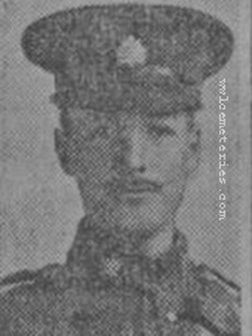
109639 Private
Walter A. Taylor
4th Canadian Mounted Rifles Battalion
2nd June 1916, aged 26.
Panel 30, 32.
Son of Mr. and Mrs. G. Taylor, of 31, Priory Place, Craigie, Perth, Scotland.
Walter A. Taylor
4th Canadian Mounted Rifles Battalion
2nd June 1916, aged 26.
Panel 30, 32.
Son of Mr. and Mrs. G. Taylor, of 31, Priory Place, Craigie, Perth, Scotland.
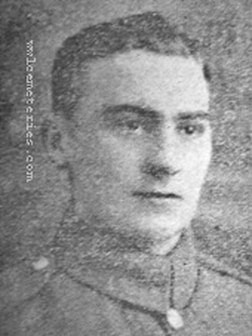
36821 Lance Corporal
William Taylor
7th Bn. East Lancashire Regiment
31st July 1917, aged 19.
Panel 34.
Son of William and Grace Taylor, of 27, Rector Rd., Burnley.
William Taylor
7th Bn. East Lancashire Regiment
31st July 1917, aged 19.
Panel 34.
Son of William and Grace Taylor, of 27, Rector Rd., Burnley.
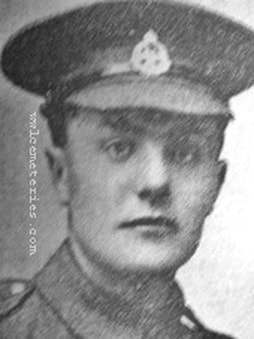
32633 Private
John Tennant
7th Bn. King's Own (Royal Lancaster Regiment)
31st July 1917, aged 21.
Panel 12.
Son of Albert Dixon Tennant, and Ann Tennant, of 398, Colne Rd., Burnley.
John Tennant
7th Bn. King's Own (Royal Lancaster Regiment)
31st July 1917, aged 21.
Panel 12.
Son of Albert Dixon Tennant, and Ann Tennant, of 398, Colne Rd., Burnley.

2888 Private
Lennox Banebridge Terry
38th Bn., Australian Infantry, A.I.F.
13th October 1917, aged 30.
Panel 7 - 17 - 23 - 25 - 27 - 29 - 31.
Son of John and Eva Terry, of Bonnie Doon, Victoria.
Lennox Banebridge Terry
38th Bn., Australian Infantry, A.I.F.
13th October 1917, aged 30.
Panel 7 - 17 - 23 - 25 - 27 - 29 - 31.
Son of John and Eva Terry, of Bonnie Doon, Victoria.

2490 Private
Austin Thickett
45th Bn., Australian Infantry, A.I.F.
7th June 1917.
Panel 7 - 17 - 23 - 25 - 27 - 29 - 31.
Austin Thickett
45th Bn., Australian Infantry, A.I.F.
7th June 1917.
Panel 7 - 17 - 23 - 25 - 27 - 29 - 31.
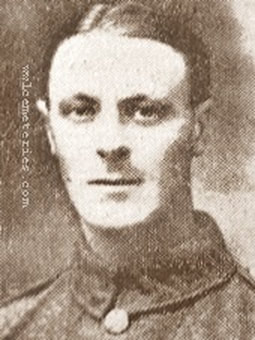
24264 Private
Frank Morphlet Thompson
7th Bn. East Lancashire Regiment
31st July 1917, aged 25.
Addenda Panel 58.
Son of the late James and Elizabeth Thompson of 328, Padiham Rd., Burnley.
Frank Morphlet Thompson
7th Bn. East Lancashire Regiment
31st July 1917, aged 25.
Addenda Panel 58.
Son of the late James and Elizabeth Thompson of 328, Padiham Rd., Burnley.

408 Private
Richard Thoms
2nd Bn. Lancashire Fusiliers
15th June 1915, aged 26.
Panel 33.
Husband of Agnes Miller (formerly Thoms), of 9, Hapton St., Padiham, Lancs.
Richard Thoms
2nd Bn. Lancashire Fusiliers
15th June 1915, aged 26.
Panel 33.
Husband of Agnes Miller (formerly Thoms), of 9, Hapton St., Padiham, Lancs.

7328 Private
Peter Thomson
1st Bn., Australian Infantry, A.I.F.
4th October 1917, aged 26.
Panel 7 - 17 - 23 - 25 - 27 - 29 - 31.
Son of John Henderson Thomson and Elizabeth Lindsay Thomson; husband of Ada Pearl Thomson, of King St., Lancurrth, New South Wales. Native of Glasgow, Scotland.
Peter Thomson
1st Bn., Australian Infantry, A.I.F.
4th October 1917, aged 26.
Panel 7 - 17 - 23 - 25 - 27 - 29 - 31.
Son of John Henderson Thomson and Elizabeth Lindsay Thomson; husband of Ada Pearl Thomson, of King St., Lancurrth, New South Wales. Native of Glasgow, Scotland.
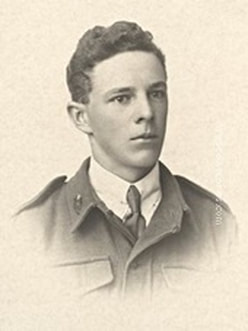
918 Sergeant
Harry Shepherdson Thrum
44th Bn. Australian Infantry, A.I.F.
4th October 1917, aged 21.
Panel 7 - 17 - 23 - 25 - 27 - 29 - 31.
Son of Edward Henry and Elizabeth Edith Thrum, of 349, Robert's Road, Subiaco, Western Australia. Native of Quorn, South Australia.
Harry Shepherdson Thrum
44th Bn. Australian Infantry, A.I.F.
4th October 1917, aged 21.
Panel 7 - 17 - 23 - 25 - 27 - 29 - 31.
Son of Edward Henry and Elizabeth Edith Thrum, of 349, Robert's Road, Subiaco, Western Australia. Native of Quorn, South Australia.
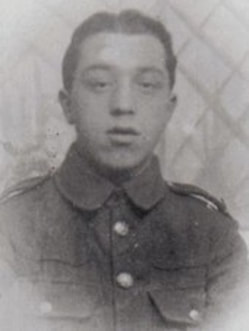
30847 Private
Joseph Edward Toms
12th Bn. East Surrey Regiment
3rd May 1917, aged 20.
Panel 34.
Son of John and Harriett Toms, of 110, East St., Epsom, Surrey.
Picture courtesy of Del Doune
Joseph Edward Toms
12th Bn. East Surrey Regiment
3rd May 1917, aged 20.
Panel 34.
Son of John and Harriett Toms, of 110, East St., Epsom, Surrey.
Picture courtesy of Del Doune

3642 Private
Harold Newman Tompkins
31st Bn. Australian Infantry, A.I.F.
26th September 1917.
Panel 7 - 17 - 23 - 25 - 27 - 29 - 31.
Harold Newman Tompkins
31st Bn. Australian Infantry, A.I.F.
26th September 1917.
Panel 7 - 17 - 23 - 25 - 27 - 29 - 31.

L/10105 Private
Basil Thomas Treffry
1st Bn. The Queen's (Royal West Surrey Regiment).
31st October 1914, aged 21.
Panel 11-13 and 14.
Son of Thomas Alfred and Helen Treffry, of 16, Bensham Manor Rd., Thornton Heath, Surrey.
Brother of Richard H. Treffry (next picture)
Basil Thomas Treffry
1st Bn. The Queen's (Royal West Surrey Regiment).
31st October 1914, aged 21.
Panel 11-13 and 14.
Son of Thomas Alfred and Helen Treffry, of 16, Bensham Manor Rd., Thornton Heath, Surrey.
Brother of Richard H. Treffry (next picture)
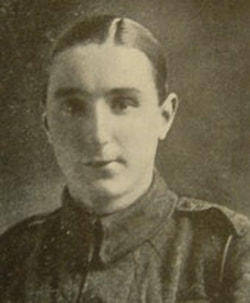
553186 Rifleman
Richard H. Treffry
1st/16th Bn. London Regiment (Queen's Westminster Rifles)
killed in action at Langemarck, 16th August 1917, aged 19.
Panel 11-13 and 14
Son of Thomas Alfred and Helen Treffry, of 16, Bensham Manor Rd., Thornton Heath, Surrey.
Brother of Basil Thomas Treffry, (previous picture)
Richard H. Treffry
1st/16th Bn. London Regiment (Queen's Westminster Rifles)
killed in action at Langemarck, 16th August 1917, aged 19.
Panel 11-13 and 14
Son of Thomas Alfred and Helen Treffry, of 16, Bensham Manor Rd., Thornton Heath, Surrey.
Brother of Basil Thomas Treffry, (previous picture)
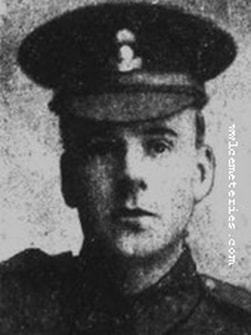
7966 Serjeant
Thomas Rowland Turner
2nd Bn. Royal Dublin Fusiliers
26th April 1915, aged 30.
Panel 44 and 46.
Brother of Mrs. Mary Bentley, of 113, Thompson St., Padiham, Lancs.
Thomas Rowland Turner
2nd Bn. Royal Dublin Fusiliers
26th April 1915, aged 30.
Panel 44 and 46.
Brother of Mrs. Mary Bentley, of 113, Thompson St., Padiham, Lancs.

7253 Private
William Hargreaves Turner
8th Bn. East Lancashire Regiment
31st July 1917, aged 33.
Panel 34.
Husband of Mabel Turner, of 16, Willow St., Burnley.
William Hargreaves Turner
8th Bn. East Lancashire Regiment
31st July 1917, aged 33.
Panel 34.
Husband of Mabel Turner, of 16, Willow St., Burnley.
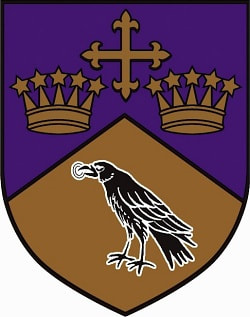
355067 Corporal
Henry Tyrer
10th Bn. The King's (Liverpool Regiment)
31st July 1917, aged 33.
Panel 4 and 6.
The information below supplied by 'The Ellesmerian Club', the alumni organisation for Ellesmere College where Henry was a pupil.
Henry Tyrer
10th Bn. The King's (Liverpool Regiment)
31st July 1917, aged 33.
Panel 4 and 6.
The information below supplied by 'The Ellesmerian Club', the alumni organisation for Ellesmere College where Henry was a pupil.
Henry Tyrer, generally known as ‘Harry’, was the eldest son of Henry ,who farmed at Stag’s Head Farm, Aintree, Liverpool and his wife, Elizabeth Ann. He was born on 9th May 1884 and the family grew over the next thirteen years with the births of four sisters and a younger brother. Tragedy struck the family in 1899 when their mother died.
Nothing is really known about Harry’ early life and education. The 1891 Census recorded him as a six-year-old boy visiting his maternal grandmother on her farm in Fazackerley. When he was fourteen years old, his parent’s decided that Harry should continue his education at Ellesmere College, north Shropshire and along with seventeen other new boys he was duly admitted at the start of the 1898 academic year.
The college had only been open since September 1884 and when Harry’s school fees were fixed for the present at £23:14:5d a year (£23.72) and beyond these there are no other necessary charges except for books and tradesmen’s bills. A boy’s total expenses need not, on average, exceed eight guineas per term. The Headmaster receives boys more particularly under his own care at a charge of three guineas a year extra.
Harry was admitted to the ‘Alfred’ dormitory, the ‘Reds’, and his parent’s obviously thought the additional three guineas represented good value. Another young boy, William Trampleasure was also admitted to the same dormitory – he lost his life on active service in January 1917. Another direct contemporary, William Galbraith died just three weeks before the Armistice was signed. If any of those three boys were to visit the college today and look at the War Memorial they would recognise at least thirty of the names. In January 1899 a small ten-year-old Irish boy followed in Harry’s footsteps and settled down into the college routine. Little did anyone realise at the time that just over eighteen years later he would be awarded the Victoria Cross for his part in an action at Guyencourt.
There were one hundred and eighty-three boys on the nominal roll that term and Harry was placed in Form Upper II under the tutelage of the Rev. R. C. Price. On 11th April 1899 the college held its annual Sports Day – Harry took 1st place in the Junior Consolation Race. At the start of the 1899 academic year, the form lists show that Harry was absent – presumably through illness but the Ellesmerian magazine for March 1900 notes that he was fit enough to play back in the ‘Alfred’ dormitory rugby team in the final against the ‘Harold’ dormitory. The match report noted this match, although played in a considerable amount of snow on the ground, was an exceedingly well contested game. The ‘Alfred’ won 5-0.
This photograph of the Headmaster’s Swimming Medal (now held in the college archives) was awarded to Harold Victor Johnson who was at Ellesmere at the same time as Harry. In fact, he also played ‘back’ for the ‘Harold’ dormitory in the final rugby match against the ‘Alfred’.
Nothing is really known about Harry’ early life and education. The 1891 Census recorded him as a six-year-old boy visiting his maternal grandmother on her farm in Fazackerley. When he was fourteen years old, his parent’s decided that Harry should continue his education at Ellesmere College, north Shropshire and along with seventeen other new boys he was duly admitted at the start of the 1898 academic year.
The college had only been open since September 1884 and when Harry’s school fees were fixed for the present at £23:14:5d a year (£23.72) and beyond these there are no other necessary charges except for books and tradesmen’s bills. A boy’s total expenses need not, on average, exceed eight guineas per term. The Headmaster receives boys more particularly under his own care at a charge of three guineas a year extra.
Harry was admitted to the ‘Alfred’ dormitory, the ‘Reds’, and his parent’s obviously thought the additional three guineas represented good value. Another young boy, William Trampleasure was also admitted to the same dormitory – he lost his life on active service in January 1917. Another direct contemporary, William Galbraith died just three weeks before the Armistice was signed. If any of those three boys were to visit the college today and look at the War Memorial they would recognise at least thirty of the names. In January 1899 a small ten-year-old Irish boy followed in Harry’s footsteps and settled down into the college routine. Little did anyone realise at the time that just over eighteen years later he would be awarded the Victoria Cross for his part in an action at Guyencourt.
There were one hundred and eighty-three boys on the nominal roll that term and Harry was placed in Form Upper II under the tutelage of the Rev. R. C. Price. On 11th April 1899 the college held its annual Sports Day – Harry took 1st place in the Junior Consolation Race. At the start of the 1899 academic year, the form lists show that Harry was absent – presumably through illness but the Ellesmerian magazine for March 1900 notes that he was fit enough to play back in the ‘Alfred’ dormitory rugby team in the final against the ‘Harold’ dormitory. The match report noted this match, although played in a considerable amount of snow on the ground, was an exceedingly well contested game. The ‘Alfred’ won 5-0.
This photograph of the Headmaster’s Swimming Medal (now held in the college archives) was awarded to Harold Victor Johnson who was at Ellesmere at the same time as Harry. In fact, he also played ‘back’ for the ‘Harold’ dormitory in the final rugby match against the ‘Alfred’.
Harry is also recorded as playing cricket for his dormitory in his last term. He also excelled at swimming and gained not only his swimming certificate for demonstrating his ability to swim one hundred yards whilst wearing cricket flannels but also a silver medal for swimming the width of Whitemere. This was a distance of nearly 600 metres and the mere was, at that time, the college’s official swimming pool courtesy of Lord Brownlow.
Harry left the college that July and the 1901 Census the following spring recorded he was a sixteen-year-old apprentice engineer living at his maternal grandmother’s house in Walton Park. It seems, however, that Harry had a sense of wanderlust and wanted to see more of the world. Numerous Crew Lists that have been placed on the internet show that he worked on various trans-Atlantic liners as a waiter. This was not, it would seem, a permanent job as he signs on and off each voyage but it must have been a good income for him, with ‘tips’, no doubt, inclusive board and lodging whilst at sea and a chance to travel. Life in England in the early 1900s was hard. One of the ships on which he served was the ss Carmania – this was captained by James Clayton Barr whose son, Harry Gordon, would enter the college in 1904.
In the winter of 1908 life changed dramatically for Harry that was when he married Ethel Marion Hjul – a midwife, three years his senior from Kimberley, South Africa. She had qualified in Lambeth in 1905. Married life caused another change in career for Harry and the 1911 Census records that the couple were resident at Emery Street, Walton and he was employed as a stevedore at Liverpool Docks – then some of the busiest in the world.
The Territorial Army offered a further source of income for many men and it is most likely that Harry enrolled, gaining valuable experience.
Almost no records have survived that give any information with regards to Harry’s military service. His Medal card (opposite) shows he held the rank of Corporal in the King’s Liverpool Regiment and was awarded the Victory and British War Medals. As he was not awarded the 1914-1915 Star he did not serve overseas prior to 31st December 1915.
Harry died on active service on 31st July 1917 whilst serving as Sergeant Tyrer, Service No: 355067with the 10th Battalion, the King’s Liverpool regiment. Four other Ellesmerian lost their lives on active service that month.
Harry’s sacrifice is commemorated on the Ypres (Menin Gate) Memorial and the Ellesmerian Club will ensure that his name is added to the War Memorial at his old college. Until March 2022 nothing had been known about Harry’s wartime service.
Ethel remained in Liverpool for the rest of her life, never re-married and died in 1959.
Harry left the college that July and the 1901 Census the following spring recorded he was a sixteen-year-old apprentice engineer living at his maternal grandmother’s house in Walton Park. It seems, however, that Harry had a sense of wanderlust and wanted to see more of the world. Numerous Crew Lists that have been placed on the internet show that he worked on various trans-Atlantic liners as a waiter. This was not, it would seem, a permanent job as he signs on and off each voyage but it must have been a good income for him, with ‘tips’, no doubt, inclusive board and lodging whilst at sea and a chance to travel. Life in England in the early 1900s was hard. One of the ships on which he served was the ss Carmania – this was captained by James Clayton Barr whose son, Harry Gordon, would enter the college in 1904.
In the winter of 1908 life changed dramatically for Harry that was when he married Ethel Marion Hjul – a midwife, three years his senior from Kimberley, South Africa. She had qualified in Lambeth in 1905. Married life caused another change in career for Harry and the 1911 Census records that the couple were resident at Emery Street, Walton and he was employed as a stevedore at Liverpool Docks – then some of the busiest in the world.
The Territorial Army offered a further source of income for many men and it is most likely that Harry enrolled, gaining valuable experience.
Almost no records have survived that give any information with regards to Harry’s military service. His Medal card (opposite) shows he held the rank of Corporal in the King’s Liverpool Regiment and was awarded the Victory and British War Medals. As he was not awarded the 1914-1915 Star he did not serve overseas prior to 31st December 1915.
Harry died on active service on 31st July 1917 whilst serving as Sergeant Tyrer, Service No: 355067with the 10th Battalion, the King’s Liverpool regiment. Four other Ellesmerian lost their lives on active service that month.
Harry’s sacrifice is commemorated on the Ypres (Menin Gate) Memorial and the Ellesmerian Club will ensure that his name is added to the War Memorial at his old college. Until March 2022 nothing had been known about Harry’s wartime service.
Ethel remained in Liverpool for the rest of her life, never re-married and died in 1959.

13239 Private
Hamilton Shirley Vincent
2nd Regt. (Inf.) South African Infantry.
14th October 1917, aged 18.
Panel 15, 16 and 16A.
Only son of Capt. J. H. Vincent (R.E.) and A. Beatrice Vincent, of 13, Leigham Terrace, The Hoe, Plymouth, England.
Picture courtesy of David Paton, nephew of this soldier
Hamilton Shirley Vincent
2nd Regt. (Inf.) South African Infantry.
14th October 1917, aged 18.
Panel 15, 16 and 16A.
Only son of Capt. J. H. Vincent (R.E.) and A. Beatrice Vincent, of 13, Leigham Terrace, The Hoe, Plymouth, England.
Picture courtesy of David Paton, nephew of this soldier
Dedications
7893 Private George Turner, 2nd Bn. Oxford & Bucks' Light Infantry, 16th November 1914, aged 29. Son of Maria Turner (formerly Bird) & William Turner of Spriggs Hollies, Chinnor, Oxon, Buckinghamshire, England.
Remembered by great niece, Joan Pullen
7893 Private George Turner, 2nd Bn. Oxford & Bucks' Light Infantry, 16th November 1914, aged 29. Son of Maria Turner (formerly Bird) & William Turner of Spriggs Hollies, Chinnor, Oxon, Buckinghamshire, England.
Remembered by great niece, Joan Pullen

